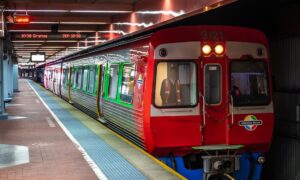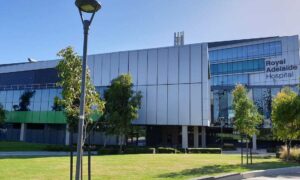 Presented by Adelaide Youth Orchestra
Presented by Adelaide Youth Orchestra
Reviewed Sunday 25th March 2012
For their first Maestro Series concert of the year, the Adelaide Youth Orchestra turned to Russia, and countries that have been under its control. Conductor, Keith Crellin OAM, selected three contrasting works, a fantasia, a concerto and a symphony.
Piotyr Ilich Tchaikovsky's (1840-1893) Capriccio Italien, Op. 45 (1880) opened the programme. He wrote the piece as a reflection on his trip to Italy where, in 1879, he spent three months in Rome. The very popular work uses themes that he heard around him, from the nearby military base and from street songs, as well as folk songs that he found through his research. The full 60 piece orchestra showed enormous enthusiasm for this piece, one of the best known in the concert repertoire, and gave it plenty of life, capturing the internal spirit of the work and bringing out all of the orchestral colour.
Next came Dmitri Kabalevsky's (1904-1987) Concerto for Violin and Orchestra in C major, Op. 48 (1948), with soloist, Tianyou Ma, the youngest violinist in the orchestra. Kabalevsky was heavily involved in music education and this is one of the works that he wrote with youth orchestras in mind. Such was the quality of this work that it soon moved into the concert world after David Oistrakh deemed it worthy of professional exposure and included it on his repertoire. Tianyou Ma shows great technical skill but also a high level of musicianship and an emotional connection with the music. His wonderfully fluid and dexterous performance was strongly supported by an empathetic performance by the orchestra, under the skilful control of their conductor, Keith Crellin.
The second half of the concert was taken up entirely with the Symphony No. 1 in E minor, Op. 39 (1898) of Jean Sibelius (1865-1957). It is his depiction of the emotional power of Finland's reaction to Russian domination. He was a Nationalist composer in the Romantic style, although pointing toward modernism. Written in 1898 and first performed in 1899 it was revised and the version now heard is that one from 1900, the original having not survived. It features string and woodwind solos, opening quietly with a solo clarinet over a timpani roll, a theme that returns at the start of the final movement. It is also generally played somewhat slower than the metronome markings given by the composer.
This complex and varied work provided both a challenge and an opportunity for the orchestra, allowing a good many of the members to be heard as soloists, if sometimes only briefly. They not only rose to the challenge, but offered a superb performance of this stirring piece.
Yet again, the Adelaide Youth Orchestra pleased a large and discerning audience through a combination of their choice of music and first class performances. Keep an eye open for their future concerts this year.
Reviewed by Barry Lenny, Arts Editor, Glam Adelaide.
Adelaide Youth Orchestras – Concert Programme
Adelaide Youth Orchestras Facebook Page
Venue: Elder Hall, University of Adelaide, North Terrace, Adelaide
Season: One performance only
Duration: 2hrs (including 20 minute interval)




















